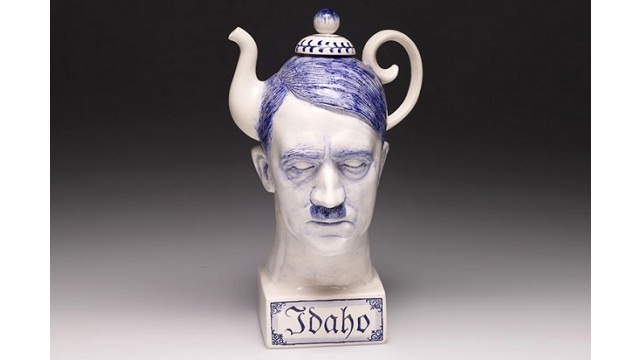A Trip Down Shepard Fairey’s YouTube Rabbit Hole

“As a creative person I’ve always wanted to surround myself with inspiring things,” says Shepard Fairey, the artist and designer who is best known for his Obey Giant campaign and Obama Hope poster. “So I’ve collected books,” Fairey says, and “wandered around the street and photographed hand-painted signs and architecture.”
What’s the Big Idea?
Fairey’s aesthetic, which has so much to do with appropriating and re-imagining images — not to mention bending and breaking the rules — is best understood through the lens of his many colorful influences. And so if we were to follow Fairey down his rabbit hole of inspiration, we would find ourselves at the origins of the punk rock movement. A significant cultural moment occurred amidst the tumult of Paris in the spring of 1968, when punk aesthetics and radical politics converged.
Sous les pavés, la plage. (Under the pavement, the beach.)
Playful slogans like this one were found spray-painted around Paris during the student uprising of May, ’68, when the Situationist movement reached its peak. This take-back-the-streets sensibility was later appropriated in the graphic design of punk rock artists like Jamie Reid, in the madman antics of Malcolm McLaren, and again found its gritty expression in the skateboarding culture that gave birth to Shepard Fairey’s aesthetic.
While Fairey cut his teeth as a street artist collecting stickers and appropriating popular imagery, he has become a highly influential commercial artist and designer today. Fairey says he takes his cue — as anyone interested in design should, he says — from the graphic designer and filmmaker Saul Bass.
More broadly speaking, Fairey says he enjoys scouring the digital landscape to find inspiration, whether it is in the form of vintage music videos, classic motion picture sequences or commercial campaigns. “Now with the computer and the ability to look at things on the Internet” he says, “there are so many other things you can discover that you don’t discover first-hand when you’re at the library or on the street.”
And so it is fitting that Fairey has been chosen by the Museum of Contemporary Art in Los Angeles as one of a handful of artists and thinkers who are curating their picks of YouTube. In an original MOCAtv series called “YouTube Curated By,” Fairey, along with Gary Baseman and Julian Hoeber, rapper Brooke Candy and curator Alma Ruiz, talk about the inspiration, entertainment, education and distraction they find on YouTube.
Here at Big Think we are pleased to be sharing their selections, which range from “the hilarious to the educational, and from the obscure and forgotten to popular classics,” as MOCAtv’s John Toba tells us.
“YouTube is one of those things that is incredibly useful for research and I use it that way, the same way I use Google,” says Fairey. “It’s fun to just have one thing lead to the next to the next.”
You can take a trip down Fairey’s YouTube rabbit hole here:
To view the rest of the MOCAtv series, click here.
Image courtesy of Shutterstock/George Koroneos





